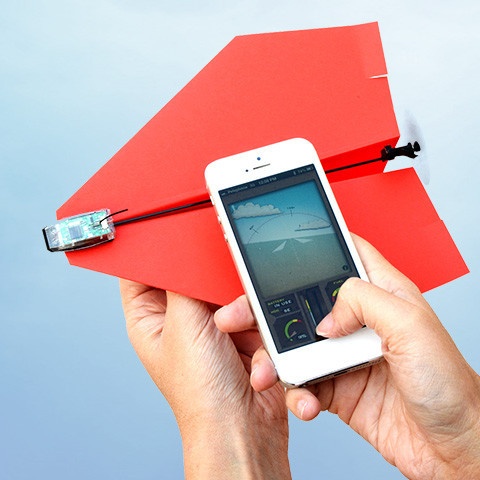
By Keith Laing
The Federal Aviation Administration (FAA) has approved the use of a paper airplane that is a drone.
The agency issued the approval for flights of a drone that is described as a “smartphone-controlled paper airplane.” In doing so, it waived requirements for FAA approval of drone flights that are operated outside of restricted airspace and below 200 feet.
The agency said the flights were approved for “aerial photography and videography” purposes.
The makers of the paper airplane drone, Connecticut-based Tailor Toys PowerUp, tout the paper airplane drones as a revolutionary product.
“The PowerUp 3.0 transforms ordinary paper planes into smartphone-controlled flying machines,” the company says about the devices on its website.
“Simply tilt your smartphone or tablet to maneuver right or left and use PowerUp’s throttle lever to ascend or descend,” the description continues. “The motorized frame’s 180 feet/ 55 meter range, crash-resistant design, and responsive motion control and precision turning give users extremely flexible flight control.”
The FAA has approved more than 1,000 drone flights in the process of developing regulations for allowing a rapid expansion of the use of the devices in the U.S.
The agency has faced tremendous pressure to approve an expansion of nonmilitary drone use from companies such as Amazon, which has said the technology can be used to make speedier online deliveries.
Police and other law enforcement groups were also seeking approval to use the technology, and the FAA has investigated several drone incidents that occurred in conjunction with photography at college and professional sporting events.
The section of law that allows the FAA to grant drone exemptions gives the Transportation Department the authority to drop a requirement that operators of the technology apply for a certificate of airworthiness that is normally required for flights that are formally considered an aircraft.
In its letter to the paper airplane drone petitioner, Connecticut resident Peter Sachs, the FAA said it “has determined that good cause exists for not publishing a summary of the petition in the Federal Register because the requested exemption would not set a precedent, and any delay in acting on this petition would be detrimental to the petitioner.’
The definition of drones as aircraft under the FAA’s proposed rules has riled recreational operators of the devices who consider themselves hobbyists instead of pilots.
The FAA’s rules define small drones as devices that weigh less than 55 pounds and require them to be operated at heights that are less than 500 feet and speeds that are less than 100 miles per hour.
The regulations also call for drone flights to be limited to daytime hours and conducted only by U.S. residents who are older than 17.
Drone operators are also prohibited under the FAA proposal from conducting flights that take the devices out of their line of vision — a big blow to companies like Amazon that have touted the possibility of using the technology to conduct deliveries.
http://thehill.com/policy/transportation/252141-feds-approve-paper-airplane-drone-flights
